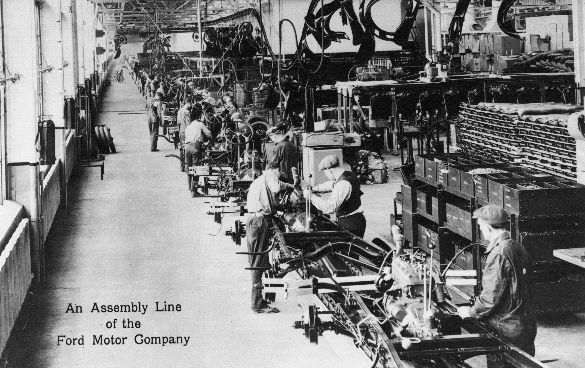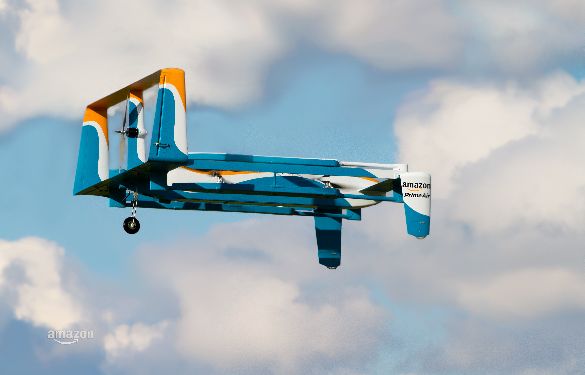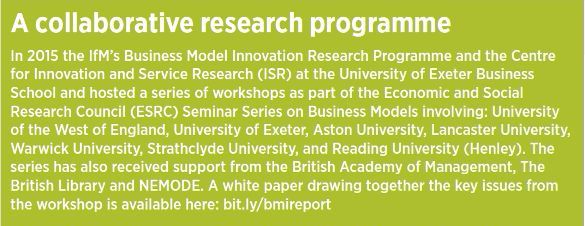The innovation game

It was back in the 1990s, when the dot com boom was in full swing, that the term ‘business models’ entered our collective consciousness. Completely new ways of doing business – enabled by the internet – sprang up seemingly overnight. Of course, many of them disappeared with equal rapidity, usually because their founders had little idea how they were going to make money from the value propositions they were offering their customers. But some of them were able to demonstrate that by harnessing new technologies it was possible to create value in entirely new ways. Amazon and eBay, for example, have fundamentally changed the world of retail. Since then we’ve seen Google and Facebook, iTunes and Spotify find innovative ways to monetise data-sharing platforms, and we now use Uber to get us from A to B and Airbnb to find us somewhere to stay when we get there.
While ‘business model’ has become a widely used term – and something startups and existing businesses aspire to and fear in equal measure – work remains to be done by the research community to develop a clear understanding of the concept which can then be applied to help organisations create and maintain competitive advantage.
In the manufacturing context, understanding business models and how to create new ones is becoming an increasingly urgent task: they are often the bridge between a technology and the ability to deliver a compelling value proposition. A new technology in and of itself does not necessarily deliver new value – it often needs a new business model if its benefits are to be fully realised. For example, in the US, when electric motors first replaced the steam engine on an industrial scale productivity gains were very limited. It was only when firms completely changed the business processes and the corresponding business models that the technology had a significant impact – and that took about 30 years.
Our manufacturing landscape is embarking on a period of radical transformation with the emergence of new production technologies such as additive manufacturing and the rapid evolution of enabling technologies such as sensors and actuators supporting developments such the Industrial Internet of Things and Industry 4.0. Understanding how to harness the potential of these new technologies by creating new business models is going to play a key part in the survival of many organisations. Amazon, once again, gives us an interesting example of the way new technologies can underpin a business model transformation. It is now investing in speech recognition software in order to create new ways in which we interact with – and buy from – it. The idea is that if we can ‘talk’ to Amazon through our devices, Amazon will be able to learn more about our preferences and acquire ever richer customer data – all without human intervention. At the same time, as has been widely reported, Amazon is also working on ‘Prime Air’, a drone-based delivery service which aims to get parcels to customers within 30 minutes. Both of these innovations will potentially have an impact on all aspects of manufacturing, from R&D to customer delivery. As well as changing the supply chain, drone technology, for example, could contribute to a ‘redistributed manufacturing’ agenda, using new manufacturing processes to make products in smaller quantities – or even to order – closer to the customer. Meanwhile, a deep understanding of customer preferences could start to feed directly into new product development, also supporting a drive to mass customisation.
Understanding how to harness the potential of these new technologies by creating new business models is going to play a key part in the survival of many organisations.
As well as being a preoccupation for individual businesses, business model innovation is also an issue for national economies. In spite of the emergence of new technologies, achieving sustainable growth and productivity remain major challenges. Being able to develop business models which will bring new technologies successfully to market will help to deliver productivity gains for new and established firms alike. However, the challenges of business model innovation, particularly for existing firms, are not to be underestimated. In highly competitive, fast-moving markets large firms need to be able to respond quickly to new opportunities. This requires entrepreneurial skills and often a root and branch shift in thinking throughout the organisation. But most mature businesses will have moved from achieving ‘effectiveness’ to driving ‘efficiency’. In order to innovate they need to be less concerned with maximising short-term return on investment and become more focused on creating customer experiences.
Embracing business model thinking can help firms find new ways to create value and grow through a more integrated view of their business and its stakeholders.
The challenge, therefore, is two-fold: they need to sustain their existing business model while the new one takes shape. These two activities – optimising existing business models and creating new ones – often need completely different capabilities, organisational structures and cultures. It is becoming increasingly common for firms to acknowledge this by creating new roles and appointing ‘business model innovation managers’ whilst embedding ownership of the business model across the organisation.
This can be a positive step but it needs to be done hand in hand with a clear understanding of the scale of organisational change required if firms are to reap the rewards of business model innovation.
There are, of course, many salutary tales of incumbents that have failed to adapt to changing market conditions. If firms identify a business model that fits particularly well in a particular environment, there is the potential for ‘lock in’ and the risk of finding that model no longer relevant when the environment changes. Blockbuster is just one example of this. In 2000, when new kid on the block Netflix leveraged the postal system to develop a new business model, Blockbuster did not see the need to dilute its massively successful global brand with a mail order operation until much later. And while Blockbuster is now out of business, Netflix continues to take advantage of technological developments in order to innovate its business model, moving from mail order to video streaming and now to hugely successful original programming.
A new research agenda
So research into business model innovation is important. In the last ten years, it has been an integral part of our activities at the IfM. Research into emerging industries, into how manufacturers make the shift to services, how they find more sustainable ways of creating value and how they redesign their operations networks – all of these encompass the concept of business model innovation. But as new technologies emerge and evolve faster than ever before there is an increasingly urgent imperative to focus on it in its own right.
There are, of course, many salutary tales of incumbents that have failed to adapt to changing market conditions.
The first task is to arrive at an agreed definition of a business model which currently exists only at a very high level of abstraction. That definition asserts that a business model comprises three things: value proposition, value creation and value capture. In other words, what products and services will be provided for which customer groups, how the products or services will be created and delivered and how the offering will be monetised – or provide other social value. But the devil is in the detail. Within that broad framework there are many different elements: not just who your customers are, but the mechanics of how you interact with them and how you realise value whether through, for example, transaction fees, data sales, advertising, device sales or margins. It is how all these different elements are put together that gives a business model its identity. Business model innovation, therefore, is the strategic configuration of a unique set of attributes that will compete both with the dominant model and new entrants.
A distinctive characteristic of business model innovation is the need to collaborate. With technologies moving so fast, firms find it increasingly difficult to have all the specialist knowledge they need in-house. As a result, they need to partner with customers, suppliers and even competitors. Changing the business model can, therefore, change the environment in which it operates: the enterprise itself, its competitors and, ultimately, the industry. The dynamics of business model innovation are complex: the evolution of the business model will be affected by its ecosystem, by technology and by internal organisational capabilities, structures and cultures. But business model innovation can, in turn, affect all these things too.
What, then, are the key messages? From a research perspective, we need to adopt multidisciplinary approaches which involve scientists and engineers, economists and management researchers in order to understand the technologies and how they could be linked with customers and stakeholders through different business models – and hence scaled-up and commercialised.
Embracing business model thinking can help firms find new ways to create value and grow through a more integrated view of their business and its stakeholders. Firms need to understand the importance both of business model innovation and evolution and have the people, capabilities and culture in place to make it happen.
The business model gives us another lens through which to look at the challenges of commercialising new technologies and it does this by giving us a better understanding of the link between the customer value proposition, how the value is created and distributed among its stakeholders. Addressing many of the ‘grand challenges’ facing the world today – energy, climate change, sustainability and healthcare – will rely on creating brand new business models.
For more information about the IfM’s Business Model Innovation Research Programme, please visit here.
Or contact Dr Chander Velu E: c.velu@eng.cam.ac.uk
Business model innovation report
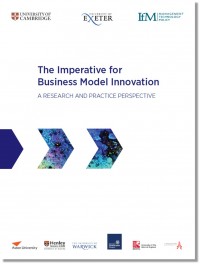 |
The imperative for business model innovation - a research and practice perspective. |
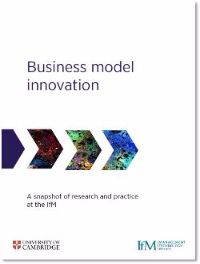 |
Business model innovation - a snapshot of research and practice at the IfM |


